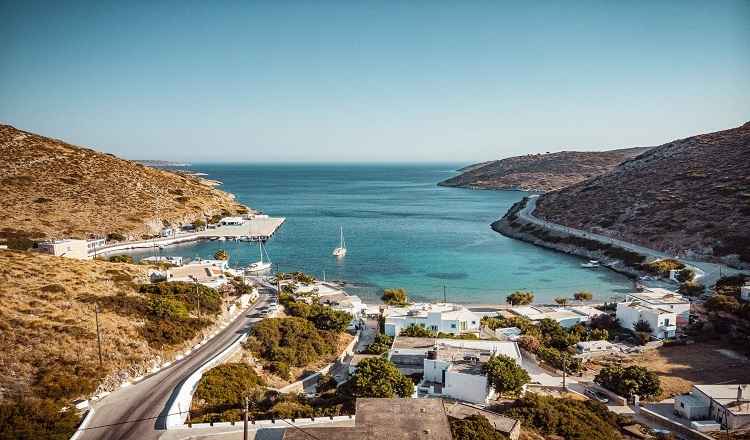
Agathonissi
Agathonisi is the northernmost promontory of the Dodecanese complex. The coastline of the island is distinguished for its impressive formation, creating beautiful windless bays such as Hohlia, Agios Georgios, Poros, and Maistro, as well as small headlands.
History of Agathonissi
Agathonisi was the homeland of the philosopher Theogitos, who was a student of Aristotle. In 74 BC, Julius Caesar, sailing from Italy towards the shores of Asia Minor, was captured by pirates from Tragaea and transported to the island of Pharmakonisi. During the Byzantine period, the island was possibly considered a place of exile. In 1088, with a golden bull from the Byzantine Emperor Alexios Komnenos to the monk Christodoulos the Latrinos, founder of the monastery of Patmos, Agathonisi came under the ownership of the monastery. In 1522, it passed under Ottoman rule.
In 1912, the island was occupied by the Italians and remained under Italian sovereignty until 1943 when it fell into the hands of the Germans. Finally, in 1948, Agathonisi was incorporated, along with the rest of the Dodecanese, into Greece. In 1954, Agathonisi became an autonomous community.
Beaches in Agathonissi
- Agios Georgios: The beach is located on the southern side of the island. It is a small beach with pebbles and shallow waters, sheltered due to its position in a closed bay. It offers natural shade from tamarisk trees and is ideal for families with children. Agios Georgios has a few taverns, snack bars, and accommodation options.
- Ammoudaki Mikro and Megalo: The beach is located on the southeastern side of Megalo Chorio. Access is through an unmarked path, starting from the point where the road from Megalo Chorio ends and heads east for about 300 meters until you reach Mikro Ammoudaki, which means "Small Sandy Beach."
- Vathi Pigadi: The beach is located on the southeastern side of the island, after the Poros beach and below the chapel of Agios Nikolaos. Access is by boat or a path that starts after the Poros beach, going from the Metamorfosis tou Sotiros to the picturesque chapel of Agios Nikolaos. It is a small pebble beach with tamarisk trees and is secluded.
- Gaidouravlakos: The beach is located on the southern side of the island, next to the Spilia (Cave) beach. Access is through a challenging path, a few meters to the right of the Spilia beach, or by boat. It is a small pebble beach, secluded as it is situated in a closed bay, and is ideal for diving and underwater fishing.
- Palos: The beach is located on the eastern side of the island, before the Poros beach. Access is by boat or a small path from the road that leads from Megalo Chorio to Katholiko, below the army barracks. It is a relatively small pebble beach and is secluded.
Sights in Agathonissi
The Tholoi is an archaeological complex located on the eastern side of the island, next to the chapel of Agios Nikolaos and above Vathi Pigadi beach. It is a unique architectural complex in the Dodecanese and an important architectural monument from the Early Byzantine period. There are estimates that they were later used by the Byzantine navy and by the Holy Monastery of Saint John the Theologian in Patmos.
Kastraki is an archaeological site located on the northern side of the island, in the area of Maistros. Since 2010, an extensive archaeological site has been discovered in Agathonisi, in the location of Kastraki. It is an ancient harbor with fortifications, military installations for the mooring of warships, a sanctuary, a large beekeeping unit, and a purple dye workshop. Due to the rich excavation material found there, the construction of a small museum is planned.
